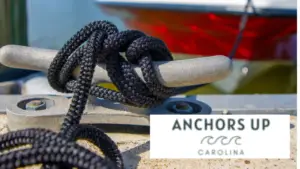The dock lines on a boat play a critical role in keeping the vessel secured to the dock. For this reason, it is essential to ensure the lines remain in good condition. As an avid boater and former captain, I have used dock lines in a wide range of diameters. Over time, it is essential to replace a deteriorating line. Here is how you determine when to swap out your boat dock lines.
Why Is Important To Have Dock Lines In Good Condition
You can consider a dock line to be a lifeline for your boat. The dock lines hold your boat in place while it is secured to the dock.
With that being said, it is important to utilize only lines that are in top condition. A line that shows signs of wear must be thrown away and replaced.
Remember, you’re not with your boat at all hours of the day and night. Unfortunately, if a line parts as a result of wear, your vessel is at risk of damage.
Avoid your boat from bouncing around off the dock or striking another boat by inspecting your lines. As a former captain, I can tell you that it is easy to spot wear. It will cost you less money and aggravation if you purchase new dock lines versus taking chances with worn dock lines.
Reasons Why Dock Lines Deteriorate
Dock lines deteriorate for a multitude of reasons. It is important to know the causes so that you can better avoid the need to replace boat dock lines on a consistent basis. Here are the top three reasons why dock lines deteriorate and fail.
Improper Storage
Without a doubt, boats are subject to extremely high moisture levels as a result of rain, temperature changes, and, of course, the body of water in which the boat is sitting.
Placing a wet dock line in a hatch or storing a dock line in a wet hatch is never a good idea.
Dock lines that are unable to dry over extended periods of time begin to deteriorate. The strength over time will be lessened.
For this reason, it is essential to allow lines to dry before stowing and to stow them in a hatch free of moisture.
Chafing
The most notable cause of dock line deterioration is chafing. Chafing occurs whenever the dock lines are utilized for holding a boat at the dock.
Importantly, chafing is caused by the constant movement of the vessel despite being secured to a dock. Remember, the lines allow for play, so the vessel will drift slightly forward, backward, and away from the dock.
The constant movement from current, wind, and tide changes causes the lines to rub on surfaces. Some of the surfaces include docks, pilings, cleats, or other hard surfaces. Unfortunately, the constant rubbing causes a dock line to chafe.
A chafed boat dock line is more likely to part because it has become weakened. As the line frays, it parts at the weakest location. Unfortunately, a parted dock line can lead to a disastrous situation if you’re not present.
One of the best ways to prevent chafing is to use chafe guards. Chafe guards velcro onto dock lines and take the brunt of the rubbing as opposed to the line itself.
Pushing The Load Limits
Pushing the load limits of a dock line can cause it to become weakened or break. However, understand that dock lines are designed to stretch.
Interestingly, I have seen a captain snap a dock line in half. Unfortunately, too much pressure was applied to the line while the captain was docking a vessel.
While docking, the captain left the twin engines in high idle versus low ideal. While pivoting with a spring line, the high RPM caused the line to stretch and snap.
No matter if you’re securing your boat for high winds or pivoting with them while docking, understand that they can only withstand a limited amount of stress. If your lines appear to be damaged from stretching, it is time to replace them before they part.
Replace Boat Dock Lines When They Show Signs Of Wear
Don’t push it when it comes to dock lines that have damage as a result of chafing, pushing load limits, or water saturation. You need to protect your investment. Remember, the boat is highly valuable, so paying for avoidable repairs is foolish. I recommend taking a close look at the boat dock lines on a monthly basis. Routine inspections will prevent a headache.







